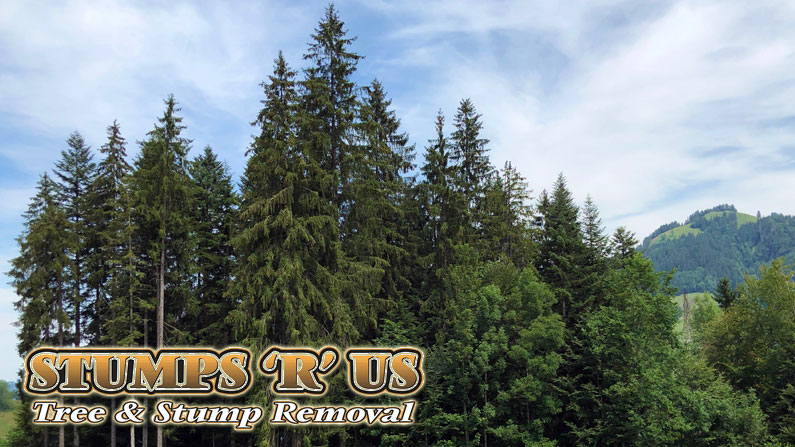Evergreens, conifers, coniferous – while the tree goes by many names, it is among the most popular ones. Coniferous trees are the oldest and tallest trees, identified by the needle-like leaves resembling pines and cones that produce seeds.
While there are over 600 species of coniferous trees, around 30 are native to Canada. These trees continue to contribute to the natural beauty of the country and are a great addition to any landscape.
Are you curious about these trees? Do you wonder which coniferous trees enhance the landscape of Ontario? Dive right in to find out about these evergreen trees.
Most Common Coniferous Trees Found In Ontario
If you’re planning to add coniferous trees to your lawn or farm, it is essential to know about the various types. Let’s take a look at the most common species of conifers in Ontario:
Pine
The most commonly found coniferous is pine. It is a shrub or a tree belonging to the genus Pinus from the Pinaceae family. There are over 100 identified types of trees in the Pine family, and the popular ones are Scots pine and Eastern white pine.

Beautiful green pine trees ~ Image by master1305 on Freepik
These trees tend to have thin leaves that look like needles, and you can find a bunch of two to five needles on every stem. Some pines also have bundles of 7 needles on a stem. Pine trees grow in a basic pyramid shape.
Douglas Fir
Similar to pine, Douglas fir also belongs to the Pinaceae family. It is a conifer species that goes by many names, like Oregon pine, Columbian pine, and Douglas spruce. You can also find foliage on these trees that resembles firs.
Photo by Reed Geiger on Unsplash
Although people call it fir, it features the properties of pine trees. These trees are huge and can grow up to the height of 330 feet. The leaves are flat in shape, soft, and circle around the branches while the cones dangle from them.
The wood of the Douglas fir is not only durable but also hard, which goes into the making of furniture.
Cedar
Cedrus, or Cedar, is a common evergreen coniferous tree native to the Mediterranean region and the western Himalayas. The tree has a dense needle cluster, with each needle being 1 to 2 inches long. When it comes to the cones of White Cedar trees, they are barrel-shaped and point up.

Green cedar tree branches ~ Image by wirestock on Freepik
Another type of cedar that is popular is False cedar in the Juniperus, Calocedrus, and Thuja genera. While these conifer plants have cedar in their name, they do not belong to the Cedrus family.
Cypress
People use the term Cypress commonly to describe 12 species of evergreen conifers that belong to the genus Cupressus of the Cupressaceae family. It is also used to refer to Bald Cypress and fustic; however, they are Jack pine in Eastern Canada.

Mediterranean cypress ~ Image by Dragana Gordic on Freepik
Belonging to the warmer regions, the Cypress trees feature sharp and scale-like needles. The cones of these plants are leathery, woody, and seem like large acorns. These trees are 80 feet tall and in the shape of a pyramid.
The awl-shaped leaves spread wide on small shoots and look like scales, while the bark is smooth in most species. Sometimes the bark may separate into strips and shed from the tree.
Juniper
The Juniper coniferous trees also belong to the Cupressaceae family. The most prominent way to identify a Juniper is from its distinct and intense aroma. The young leaves of this tree are like a needle, but the mature leaves are shaped like an awl and spread wide. You can often find them in whorls of three or in pairs.
Juniper tree with berries ~ Photo by Sébastien Noël on Unsplash
Juniper cones help add flavor to both food and beverages, while the berries give a distinct scent. You can also find Juniper oil in a few perfumes as well as medicines.
Spruce
Spruce is a tree from the Picea genus, which consists of 35 evergreen coniferous trees. They are pyramid-shaped trees and the bark on Fir trees is thin and scaly with whorled branches. Each linear is in the shape of a spiral arrangement with needle-shaped leaves based at the end of the stem of a wood base.

A spruce forest in winter covered with snow ~ Image by wirestock on Freepik
Although black spruce may resemble fir; however, the needles are stiffer while cones droop. The White spruce trees can also go up to the height of 100 feet and are prevalent in cold temperatures.
Larch
From the genus Larix, Larch is a species consisting of 10 to 12 coniferous trees. Like typical conifers, the Larch tree grows in a pyramid shape, but it sheds leaves in the autumn season like deciduous trees.
Each spur has 10-30 light green and soft needles and comes that will disintegrate upon maturity. These trees are 65 feet tall and have a bark that is reddish brown.
Final Thoughts
Getting the right coniferous tree in Ontario and maintaining it can be tricky. It requires continuous care and upkeep to ensure they remain in good shape.
If you require professional help to remove coniferous trees in Ontario, Canada, you can connect with experts at Stumps R Us. The team will guide you in right way of taking them down.





